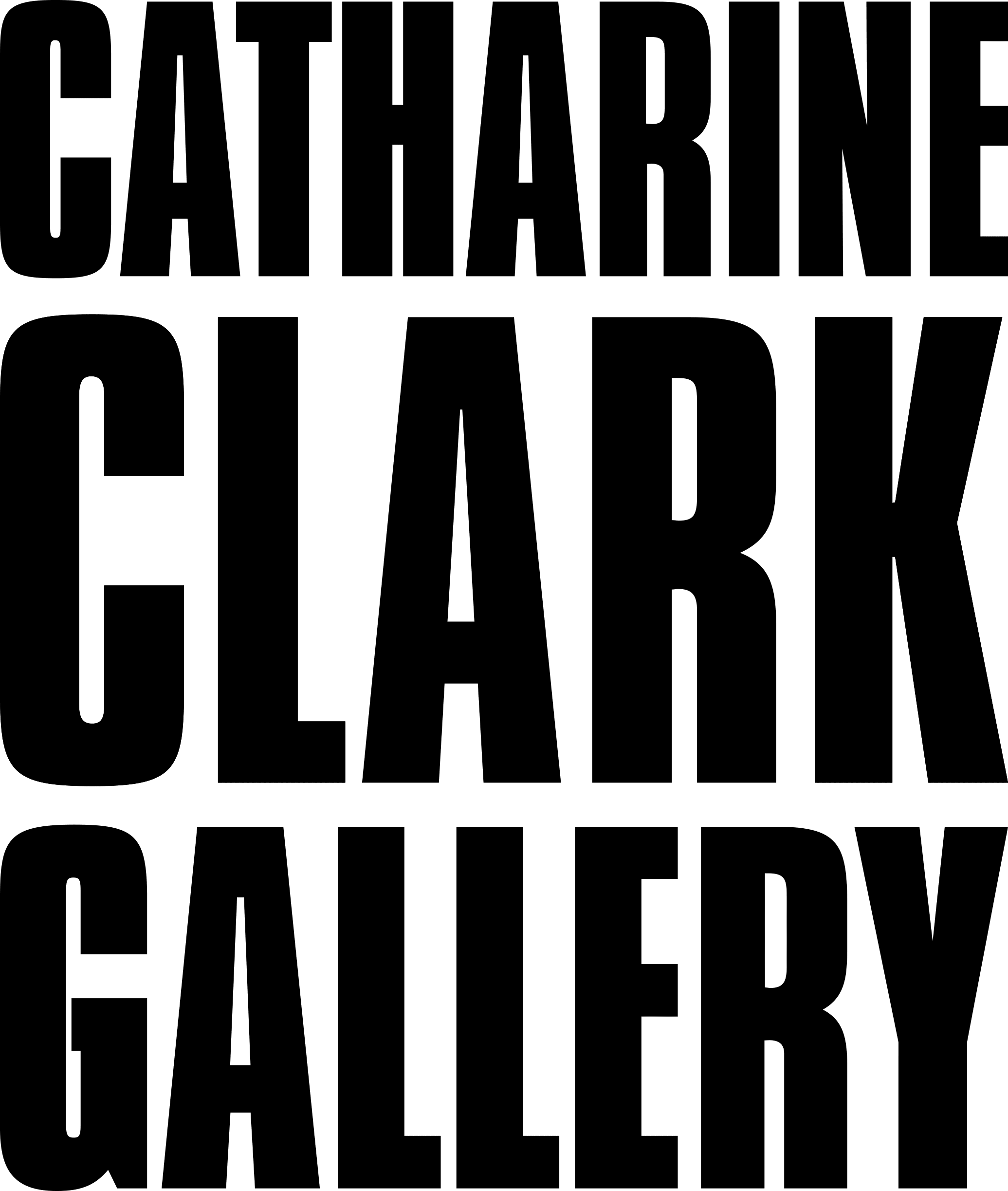Andy Diaz Hope: Yesterday’s Tomorrows
North Gallery
Zeina Barakeh: CYBOTAGE
South Gallery and Media Room
On view March 22 – May 24, 2025
Opening reception: Saturday, March 22 from 3 – 5pm; remarks at 4pm
San Francisco: Catharine Clark Gallery opens its Spring 2025 program with Andy Diaz Hope’s Yesterday’s Tomorrows (North Gallery), an exhibition of new sculpture and photo collages, and Zeina Barakeh’s CYBOTAGE (South Gallery and Media Presentation), an exhibition of single-channel animations and life-size projections. Both exhibitions are on view from March 22 to May 24, 2025, with an opening reception on Saturday, March 22 from 3 to 5 PM.
Yesterday’s Tomorrows is Andy Diaz Hope’s sixth exhibition with the gallery. Diaz Hope framed his previous collaborative exhibition with Laurel Roth Hope, An Inexhaustive Study of Power, as an exploration of how hierarchies are built into systems, how power changes over time, and who benefits from it. In his latest body of work, Diaz Hope continues this investigation through the lens of speculative futures. He writes, "Science fiction as a genre came into mainstream popularity in the 1940s and 1960s, eras when the world was rocked by the advent and repercussions of atomic bombs, world wars, civil disobedience and political protest, and the beginnings of space exploration. Technology was growing exponentially, and new futures needed to be imagined. People were looking for answers to existential questions about morality that, for many, religion no longer answered. Writers tackled predictions of where technology might lead us. Those once-imagined frontiers are currently being explored in the areas of artificial intelligence, climate devastation, resource depletion, and private investment in space exploration.”
Diaz Hope describes this latest body of work as both highly conceptual and deeply personal. He reflects, "I was raised in a household of scientists and steeped in the methodologies of science and science fiction. My childhood home was filled with renowned physicists and the science fiction that they read by authors such as Isaac Asimov, Arthur C. Clarke, and Robert Heinlein, as well as the stories in Analog magazine. Later, I began to read literature with more diverse perspectives by authors like Octavia Butler, Nisi Shawl, Nnedi Okorafor, Becky Chambers, and Cixin Liu. My grandfather, with whom I lived and who stood in as my de facto father, immigrated to America with his children to work at the forefront of radar research and as a member of the Houston Space Center Ground Control design team. Influenced by my grandfather, I went to Stanford intending to get a PhD in Applied Physics but became more interested in art and design. I was raised with the belief that science and reason could solve all of humankind’s problems if implemented through democratic means.”
The works in Yesterday’s Tomorrows use the visual language of historic speculative fiction to imagine a simultaneously utopian or dystopian future that depends on our collective responsibility for humankind’s actions. Diaz Hope combines traditional craft techniques (stained glass, silkscreen, and collage) with new technologies (3D printing, deep space imaging, and A.I. image generation) to evoke this tension between nostalgia for an analogue past amidst an increasingly unstable and uncertain technological present.
CYBOTAGE is Zeina Barakeh’s third presentation with Catharine Clark Gallery and her first full gallery exhibition. Encompassing projection and video, Barakeh’s exhibition invites viewers into an immersive space where art, biology, global security, and social science converge. Named after its central body of work, this series of animated digital colossi probes the ethical dilemmas of human enhancement technologies—sparking dialogue on their impact on society and the environment. Inspired by the colossal guardian statues of Ancient Egypt’s Abu Simbel, these figures, constructed from MRI-like scans overlaid with mapping systems, stand as “guardians” of cyberspace, projected onto landmark facades, skyscrapers, or displayed indoors, as is the case in the gallery, where the figures take the form of floor-to-ceiling projections.
Drawing from the legacy of Ancient Egyptian colossi, CYBOTAGE reflects on humanity’s shifting relationship with technology—from the permanence of carved stone to the ephemeral nature of digital pixels. Reimagining the colossus as a "deity" of the internet age, these projected figures question our dependence on cyberspace as a modern temple and the unseen forces that govern and protect our digital existence.
The exhibition CYBOTAGE considers the intersections of human enhancement, cybernetics, and data surveillance with body autonomy, longevity, and environmental sustainability. It raises urgent questions about access to technological upgrades, how these advancements could reshape societal hierarchies, and what “equality” might mean in a future where the boundaries between human and machine continue to dissolve—particularly as the gap between enhanced and non-enhanced individuals emerges in both civilian and military spheres.
CYBOTAGE is the recipient of the 2025 Leonardo-ASU Seed Grant and is supported in part by the 2024 SF Bay Area Artadia Award and the Spirit of the Depths Artadia Award. In conjunction with CYBOTAGE, the gallery also presents The Labyrinths of Remedies, a sequel to Barakeh’s acclaimed animation The Gardens of Maladies. This new work blends Persian, Mughal, and Chinese miniature styles with repurposed imagery from Pieter Bruegel’s The Tower of Babel and Hieronymus Bosch’s The Garden of Earthly Delights. These iconic works are reimagined to create surreal, symbolic tableaux that reflect the complexities of human ambition, where efforts to find remedies often spiral into the very chaos they aim to resolve. Through vivid, otherworldly visuals, The Labyrinths of Remedies examines the pursuit of control and the paradox of progress, raising questions about whether true solutions can emerge in a world where creation and destruction are inseparable forces.



